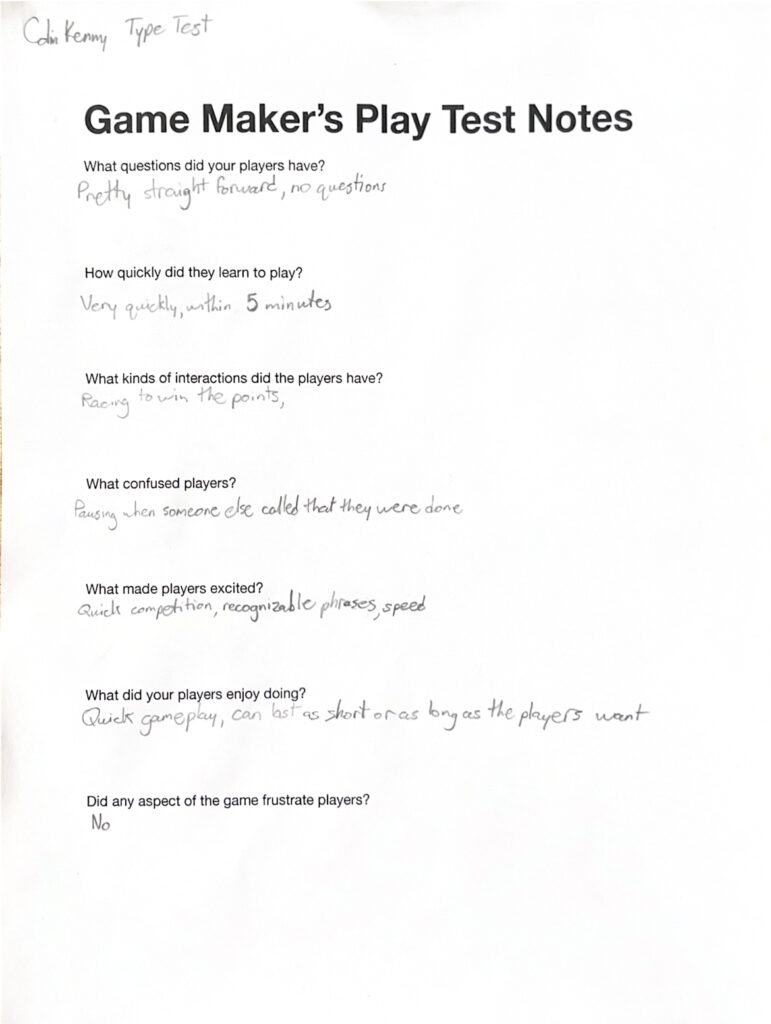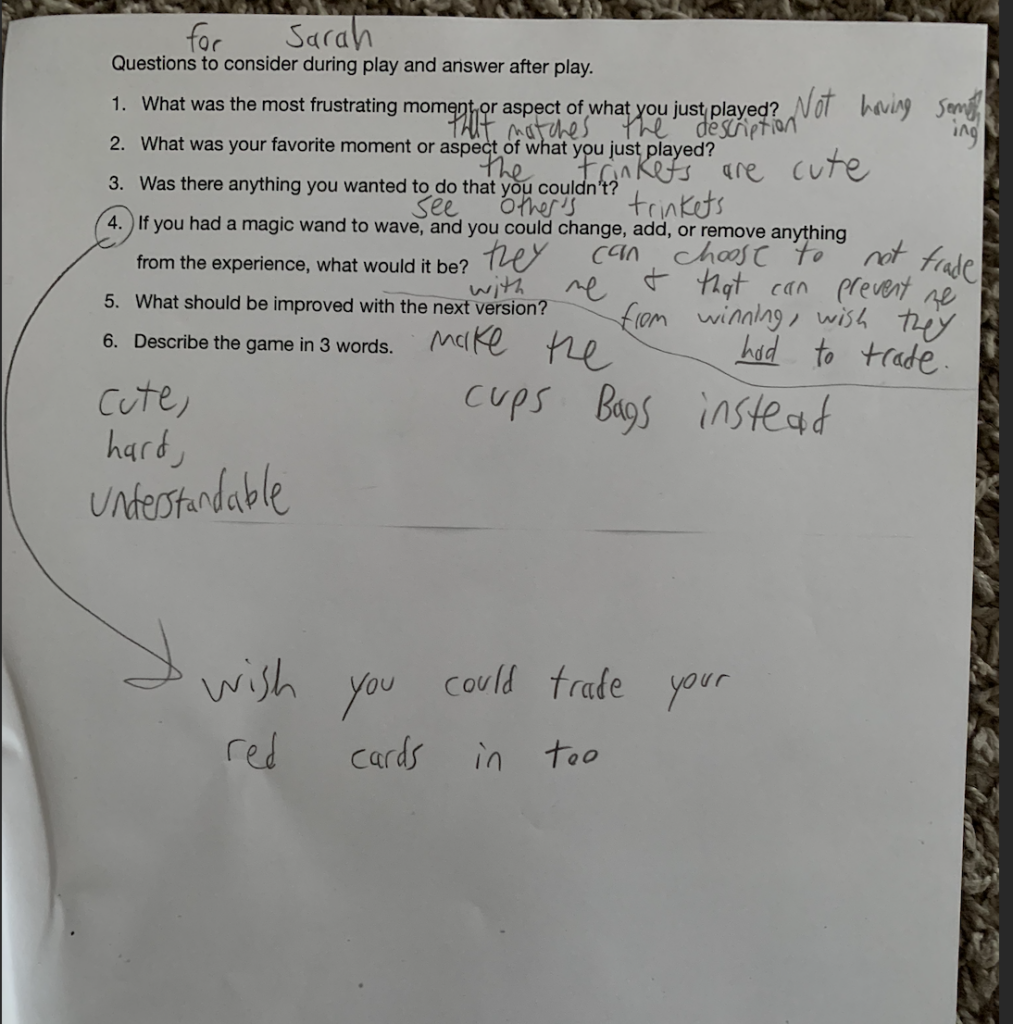Was it fun?
I might not have been the best audience to play as I often get anxious and scared thinking about death stuff but I think a lot of people could have fun playing this game.
What were the player interactions?
When I played it was light-hearted discussing the situations on each card and our opinions on things like insects and fungi.
How long did it take to learn?
It took around 5 minutes to learn, very simple rules.
Would you play it again?
Maybe one more time as another tester, but I would need to consider it and make sure I’m in a good headspace first.
Analyze the game using the 3 act structure.
We started off by just taking turns and moving down the board. It was really anyone’s game to win or lose. We then started drawing cards that would eventually cause us to lose spaces at the end of the game, and although Gideon and I were behind getting to the end, it looked like one of us would win. We finally all reached the end and tallied the points and sent us back to were we should be, and it turned out I won. I forgot to tell Ames afterward, so Ames if you’re reading this, I would love some more invisable and imaginary points please and thank you.


